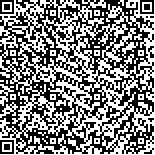王春华,朱乐英,范桃林,等.重复经颅磁刺激联合动作观察疗法对痉挛型偏瘫脑瘫患儿上肢运动功能的影响[J].中华物理医学与康复杂志,2024,46(11):988-992
扫码阅读全文

|
| 重复经颅磁刺激联合动作观察疗法对痉挛型偏瘫脑瘫患儿上肢运动功能的影响 |
|
| |
| DOI:10.3760/cma.j.cn421666-20240114-00045 |
| 中文关键词: 重复经颅磁刺激 动作观察疗法 脑瘫 痉挛型偏瘫 上肢运动功能 |
| 英文关键词: Transcranial magnetic stimulation Action observation therapy Cerebral palsy Hemiplegic spasticity Upper limb functioning |
| 基金项目: |
|
| 摘要点击次数: 2638 |
| 全文下载次数: 2744 |
| 中文摘要: |
| 目的 探讨重复经颅磁刺激(rTMS)联合动作观察疗法(AOT)对痉挛型偏瘫脑瘫(HSCP)患儿上肢运动功能的影响。 方法 选取HSCP患儿66例,按照随机数字表法将其分为假刺激组、rTMS组、联合组,每组22例。期间有患儿退出试验,最终假刺激组、rTMS组、联合组分别纳入20例、21例、22例。3组患儿均接受常规康复治疗,在此基础上,假刺激组接受假rTMS治疗,rTMS组接受rTMS治疗,联合组接受rTMS与AOT干预。上述治疗均每日1次,每周5 d,持续12周。治疗前、治疗12周后,采用改良Ashworth量表(MAS)评定3组患儿的上肢肌张力,采用Peabody运动发育量表-精细部分(PDMS-FM)、Carroll上肢功能测试(UEFT)评估3组患儿的上肢精细运动功能、手抓握功能和双手协调性。 结果 治疗12周后,3组患儿肱二头肌和腕屈肌MAS评分、PDMS-FM评分和精细运动商(FMQ)分值、UEFT评分均较组内治疗前改善(P<0.05)。治疗12周后,联合组肱二头肌MAS评分[(2.27±0.55)分]、腕屈肌MAS评分[(2.31±0.48)分]、PDMS-FM抓握区评分[(39.59±3.74)分]、PDMS-FM视觉-运动整合区评分[(89.18±9.55)分]、FMQ分值[(63.45±7.15)分]、UEFT评分[(61.23±5.30)分]较假刺激组及rTMS组改善优异(P<0.05)。假刺激组与rTMS组治疗12周后上述指标比较,差异无统计学意义(P>0.05)。 结论 rTMS联合AOT能有效改善HSCP患儿的上肢肌张力,提高上肢及手精细运动功能,且疗效较单一常规康复、常规康复联合rTMS的疗效优异。 |
| 英文摘要: |
| Objective To explore the utility of combining repeated transcranial magnetic stimulation (rTMS) with action observation therapy (AOT) in improving the upper limb motor functioning of children with hemiplegic spastic cerebral palsy (HSCP). Methods A total of 66 children with HSCP were randomly divided into a sham stimulation group, an rTMS group and a combination group, each of 22. In addition to routine rehabilitation, the sham stimulation and rTMS groups received the relevant treatment or sham treatment, while the combination group also received action observation therapy (AOT). The treatment was administered daily, five times a week for 12 weeks. Before and after the treatment, everyone′s upper limb muscle tone was evaluated using the modified Ashworth Scale (MAS), and fine motor function, grasping and hand coordination were quantified using the fine component of the Peabody Motor Development Scale (PDMS-FM) and the Carroll upper limb function test (UEFT). Results After the treatment, significant improvement was documented in the average MAS scores of the bicipital arm and wrist flexors of all three groups, and also in their average PDMS-FM scores, fine motor quotient (FMQ) scores and UEFT scores. After 12 weeks the combination group significantly out-scored the other two groups in terms of their average biceps and wrist flexor MAS scores, PDMS-FM grasping area and visual-motor integration area scores, FMQ score and UEFT score. There was no significant difference between the other two groups in any of the outcome measurements, on average. Conclusions Supplementing rTMS and routine rehabilitation with AOT more effectively improves the upper limb muscle tension, upper limb functioning and fine finger manipulation of children with hemiplegic spastic cerebral palsy. |
|
查看全文
查看/发表评论 下载PDF阅读器 |
| 关闭 |
|
|
|